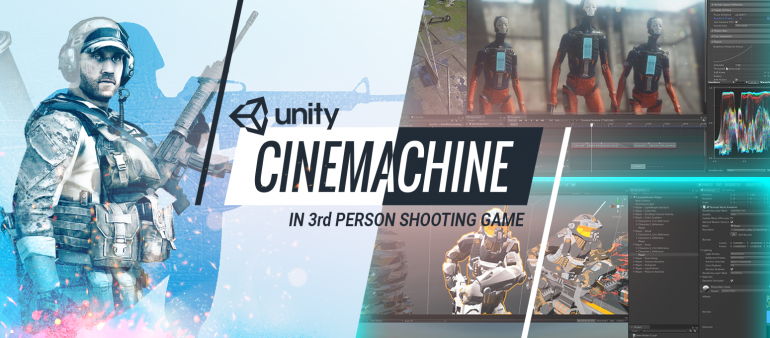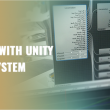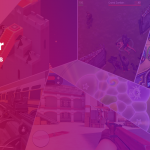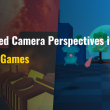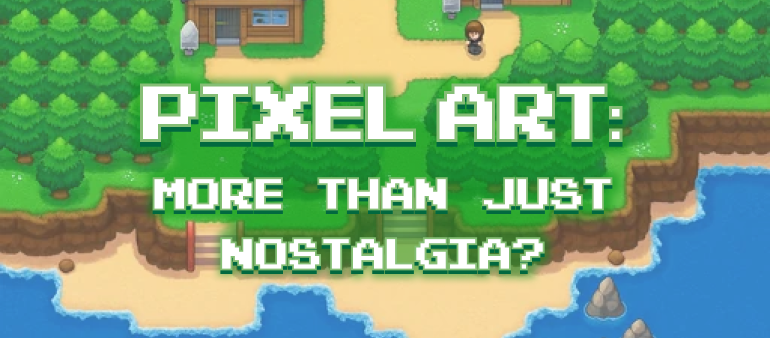Among all the things that entertain us, we love videogames the most. Mostly for they are interactive, immersive and have an engaging story that players feel impelled to live through. But, creating current generation games is way more demanding than before as game developers now need to create not just an engaging storyline graced by beautiful design, but story experiences too. And that comes from the ability to show and just not tell.
Grand Theft Auto and The Last of Us are two great examples of that as they got extremely successful not just because of advanced game mechanics and creative stories, but also because of amazing cinematic cutscenes. What it implies for a Unity game development company is the significant importance of the camera to bring video games to life and make them intriguing. So, if we talk Unity action games, most 3D shooting game developers use Cinemachine, a great offering by Unity to make cutscenes and revolutionize in-game cameras like a Hollywood movie director.
How Cinemachine helps create Magic in Third Person Shooter Games
Third-person shooter games are like watching a film because unlike first-person shooter games, they show the protagonist from an "over the shoulder” camera or "behind the back" so the entire player body is visible from behind and you ‘follow’ the protagonist. So, game concept designers get more freedom in third-person games to create a more strongly characterized avatar. But yes, as shooter games are about shooting and it’s not easy to aim from a third-person camera, most third-person shooter games also offer a first-person view. Oddworld: Stranger's Wrath is a good example that allows players to shoot from a first-person perspective, whereas chase and do hand battles from a third-person perspective. If we talk about another example of a third-person shooter that was given a person-person perspective to improve the interface for aiming and shooting, then Halo: Combat Evolved is the one that currently comes into my mind.
Now, What is Cinemachine?
Cinemachine is a complete Unity package which empowers Unity game developers, designers, camera artists and cutscene creators to get precise controls for every camera in a gaming project. The beauty of Cinemachine lies in freeing the developer from the burdensome task of writing reams of codes to get the cameras to follow an object, follow a track, orbit an object, and much more. Cinemachine comes with no external dependencies which means you can easily install it as a plugin and start using it.
After installing Cinemachine, you will see a new Cinemachine menu as shown below.

But before you start creating a virtual camera or any other camera from the dropdown, you need to add Cinemachine to your main camera. Once Cinemachine-enabled, the camera starts using a new component: the Cinemachine Brain.
Cinemachine Brain: The central Cinemachine component
Cinemachine Brain is what Cinemachine uses to control the Unity Camera. This component is responsible for monitoring all the Virtual Cameras in the scene and takes the best shots. It does the camera positioning and configuration based on the instructions passed on by the virtual cameras. The brain installed on the Unity camera observes the instructions and takes action to ensure that the camera is in the right place at the right time.
Learn how to configure the Cinemachine Brain
A question that might be popping in your head - Do you need to replace your existing camera with Cinemachine? Well, the answer is No. Cinemachine is built to work alongside your existing camera system and you can easily switch between both systems. If you can’t resist using some camera tech, you can continue using it but can also use Cinemachine for something else you deem fit. So yes, you can mix the two together as well.
Fundamental Behaviours of Cinemachine
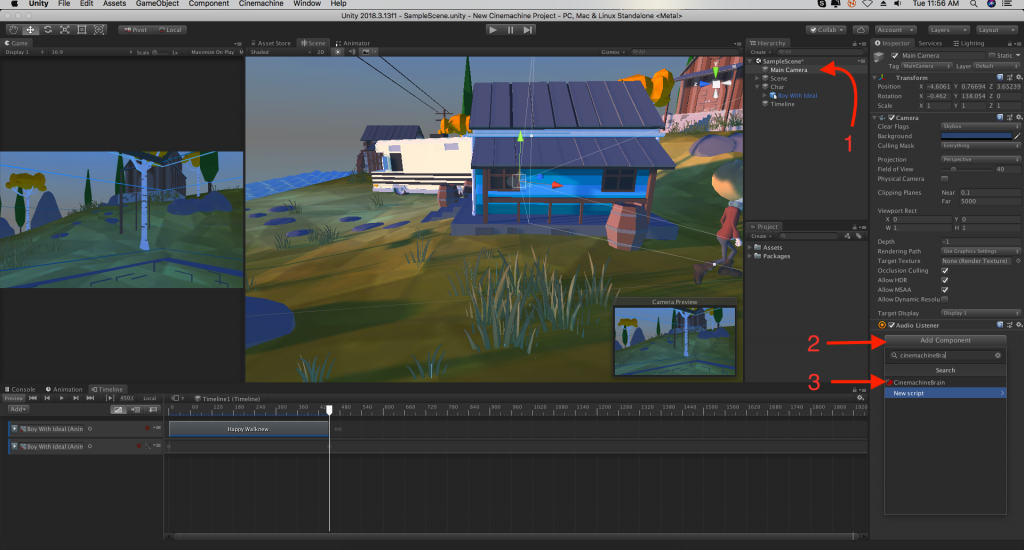
Custom Blends
It means defining relationships between two cameras and comes handy for state-machine type setups. A wonderful way to create custom camera blend setups pr level.
Composer
Lets you configure the camera to enable automatic rotation to adjust framing so as to ensure that your subjects are always in the screen space, irrespective of the position. Composer paves the way for real-time procedural composition.
Transposer
Transposer helps you attach the camera to any object and set up how you would want to follow any object. A wide range of options and behaviours lets the camera to follow the object under various conditions.
Free-look
Free-look cameras help manage 3rd-person action-adventure orbit cameras. You get a lot of controls for orbit speed, shape, recentering, damping and input type. Depending on game events, you can blend multiple Free-look cameras to get incredible control.
Target Groups
Target Groups help track multiple objects and also adjust the weight and influence of each object in the group. You can track, compose and adjust Field of View (FOV) and even how the camera is positioned based on the activities of multiple subjects.
Advanced Control and Powerful Features
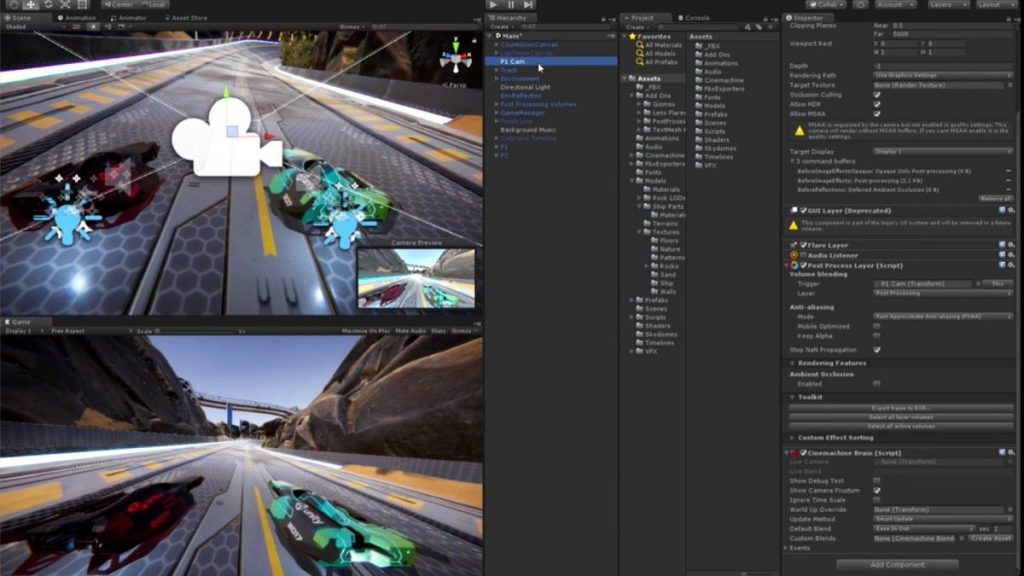
Split Screen and Picture-in-Picture
As the name suggests, you can easily configure multiple Cinemachine Brains to enable picture-in-picture, split-screen or quad split screen. You can also switch from single to split screen.
Follow Zoom
Even in the event of changing positions of characters, the on-screen size of the subject is always right. The camera will automatically zoom-in and zoom out to ensure the desired size. This helps create great interactive dialogue scenes.
Post-processing Stack Integration
Unity Cinemachine provides the ability to create custom looks or each camera and blend between them. Post-processing profiles support is there and those settings can be blended as well.
Clear Shot
Clear Shot picks the best camera when something gets between the character or subject to give the best shot. This is a brilliant feature for replays or cutscenes as it perfectly evaluates the shot in variable scenarios.
Impulse
Camera shakes add value to your videogame actions that players cherish. For example, camera shakes during explosions. Once you set up Impulse sources on objects, the camera responds on the basis of scale and distance. A six dimension shake is what you get to hand-craft or generate procedurally.
Mixer
This feature gives you ultimate control by allowing you to customize your shots. You can mix up to eight virtual cameras to create the perfect shot under varying conditions.
Collider
Collider helps avoid obstacles without having you required to write any code. There are multiple ways you can prevent your camera from getting tangled in your gaming world.
Confiner
You get to define limits with Collider so that your camera doesn’t leave specific volumes or areas. So, you can define the internal boundaries for your cameras
Priority
With the Priority feature, the most desired camera comes into action in large state-machine setups.
Unity Timeline and Cinemachine lets game app developers experiment and build a dynamics camera for 3rd person shooter games. With the Timeline feature, you can add your shots right there in one place. If things change, the Cinemachine camera knows the shot you wanted and more procedurally moves to recompose to keep the shot. Timeline allows you to mix and match and experiment with your shots by adding different camera tracks. And the best part is that it takes rapid prototyping to the next level because you no longer need to rework all of your cameras when making animation changes. Besides, developers can refine the cameras even when they move close to completing their shooter games, whether a first-person shooter or a third-person shooter using Unity.
So, are you also looking forward to creating the next Gears of War 4 or Tom Clancy’s The Division or Tomb raider? Yes! That’s wonderful! Don’t worry about technology challenges, as that’s exactly what Logic Simplified, a Dehradun-based game development company, exists for on this planet. By offering Unity game development services, Logic Simplified helps gaming businesses of all sizes to bring the best into their videogames. You can also hire 3D shooter game creators from us to convert your shooting game idea a reality. Our game designers, developers, 3D modellers, concept artists and animation artists are passionate about gaming and know what solutions will suit your game requirements. We know what it takes to bring the magic of Cinemachine in a third-person shooter game to create highly immersive experiences. Remember, it’s not only about storyline, but how you show your story too which makes a difference in today’s modern games.
For any query related to a third-person shooter game development using Unity 3D Cinemachine, write to us at enquiry@logicsimplified.com, and we will get back to you shortly to get you started in a jiffy.
 Get a Quote
Get a Quote

